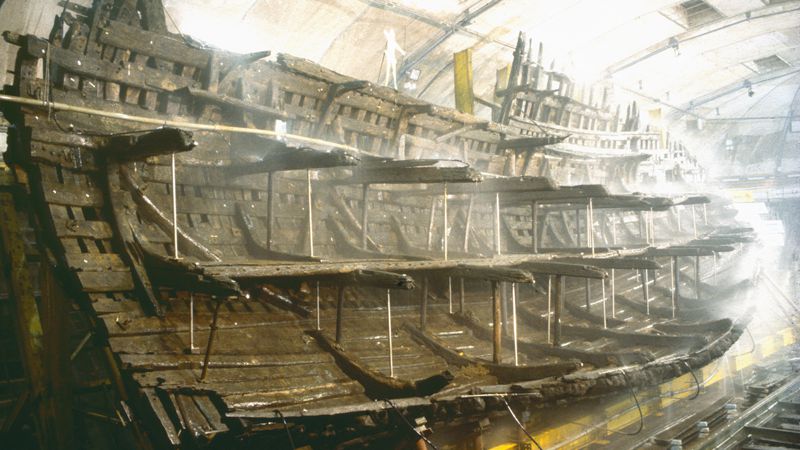Ancient British Warship Re-Enters Public View
The warship Mary Rose, flagship of Henry VIII's fleet, has reemerged into the public view, nearly five centuries after she went down in the Solent.
The Rose is housed in a building created specifically for her conservation in Portsmouth. The museum opened its doors in 2013, but to date, she has been visible mainly through small windows while undergoing a long series of preservation treatments.

During early phases of conservation, the Rose was kept at a temperature below 40 degrees and sprayed with chilled water in order to prevent decay (Mary Rose Trust)
Now, for the first time, visitors can see her in her entirety, without the obstruction of ductwork that previously surrounded her scantlings.
The vessel was ordered built by Henry VIII, one of two ships intended to be the foundation of a standing navy. She saw service in multiple wars against the French in her 34 years in service, and went down in action in the Battle of the Solent in 1545; the great majority of her crew went down with her.
The cause of her sinking is unclear – whether human error, stability problems or enemy fire, the exact sequence of events is unknown. All of her cannons were recovered fully loaded, unfired.
After the battle, the British attempted to raise her; however, she was stuck in the mud bottom and could not be lifted. Divers recovered some artifacts from the site in the 1830s, but she was lost again until 1971. In 1982 she was lifted to the surface (in front of a television audience of millions), beginning a 34-year, painstaking preservation effort.
“The story of the Mary Rose spans almost 500 years and this is a very exciting close to the latest chapter in her history," said Helen Bonser-Wilton, Chief Executive of the Mary Rose Trust. "This is the culmination of decades of hard work by the Mary Rose team and we can’t wait to share this stunning new experience with everyone." The Trust extended a special thanks to the Heritage Lottery Fund, which contributed $35 million to the project.
